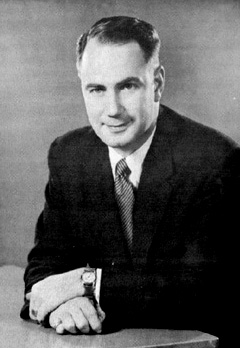Philip A. Lapp
From The Space Library
Contents |
Early Life
Phil Lapp was raised in the beaches area of Toronto Canada. He attended Balmy Beach Public School before attending Malvern Collegiate Institute. He studied at the University of Toronto Faculty of Applied Science and Engineering in Toronto before moving to the Ajax campus in 1945 where at the end of his first year he achieved first class honours. In the summer of 1947 Phil was hired by the Hydro Electric Power Commission assisting in the bush as a surveyor's assistant.
Further Education
Phil received his B.A.Sc (Engineering Physics) from the University of Toronto in 1950 and later entered Massachussetts Institute of Technology where he received his S.M. degree a year later, after writing a a thesis entitled Wind Tunnel Control Systems. A further three years were spent at M.I.T. int he instrumentation department, at the end of which time he received Sc.D. His doctoral thesis concerned guided missiles and constituted a well know reference in this field.
De Havilland
In early 1954 Phil Lapp began working at the De Havilland aircraft company of Canada in Downsview Ontario in the capacity of Senior Project Engineer in the Guided Missile Division., and during that time was engaged in the analysis and synthesis of advanced weapons systems. He also contributed to the fields of diffraction gratings, ruling engines, airborne navigation systems and magnetometer techniques.
In late 1957 Lapp founded the Canadian Astronautical Society at the De Havilland facility where he quickly began lobbying the Prime Minister of Canada, John Diefenbaker, to have Canada enter the space race as part of a Commonwealth space program. In July 1958 Lapp and the CAS' secretary Arthur Maine unveiled their concept for a Canadian sounding rocket called CHARM. In October 1958 he and his colleagues at Downsview constructed a satellite tracking station. In 1962 Lapp would be chief engineer at De Havilland during the construction of Canada's first satellite, Alouette.
CASI
In 1961 Lapp agreed to merge his Canadian Astronautical Society with the Canadian Aeronautical Institute creating the Canadian Aeronautics and Space Institute (CASI) in the fall of 1962. Lapp would later take on the role of President of CASI.
Chapman Report
In 1967 Lapp would be one of the authors of the SCC commissioned Upper Atmosphere and Space Programs in Canada report, later known as the Chapman Report after its other co-author John Chapman.
SPAR
After the purchase of A.V. Roe Canada by De Havilland parent Hawker Siddeley, Lapp proposed that the two company's merge their advanced projects office. A.V. Roe's Special Projects merged with De Havilland's Special Projects to create Special Projects Special Projects (SPAR). Lapp would then be instrumental in the development of the Storable Tubular Extendible Member or STEM antenna system.
Lapp would be on the board of directors when SPAR became a publicly traded company and would be one of the principal architects of SPAR's bid for the Canadarm robotic arm system.
Later life
Lapp would form his own consulting company in the late 1970s and would go on to consult to hundreds of engineering and science projects in the space, nuclear and resources industries. He would become a member of the board of the Canadian Air and Space Museum (at the time based in his old offices at De Havilland in Downsview) and would be awarded the Order of Canada in 1995.

